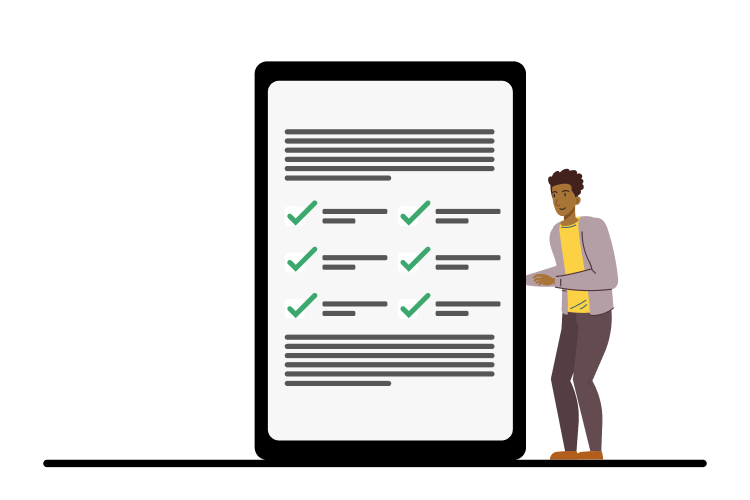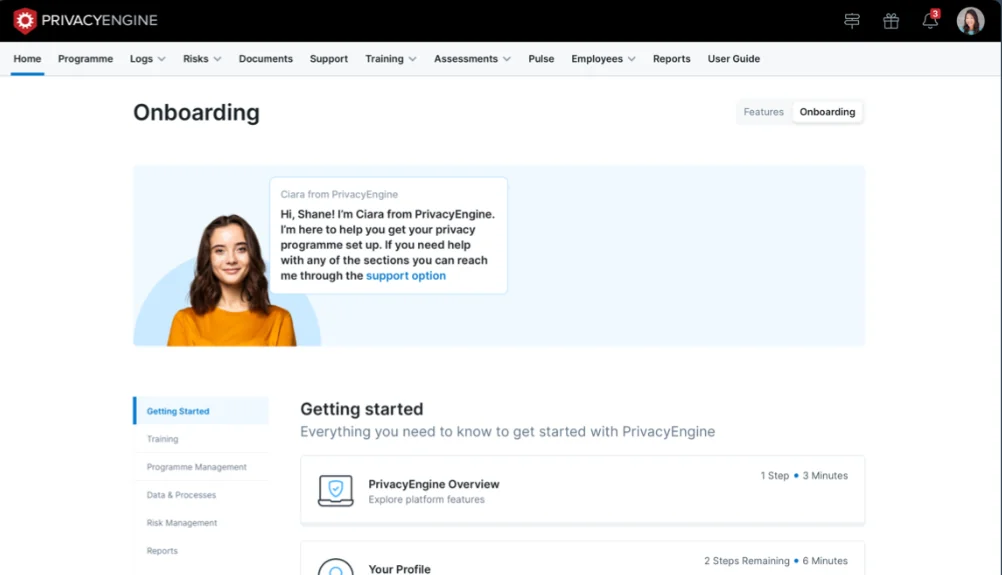The General Data Protection Regulation (GDPR) has transformed the way organizations handle personal data. With its strict rules and hefty fines for non-compliance, it is crucial for businesses to understand and implement GDPR requirements effectively. In this comprehensive guide, we will break down the key steps and strategies for operationalizing GDPR compliance, helping you navigate through the complexities and ensure data protection.
Get Your Comprehensive GDPR Guide
Integrating GDPR Compliance into Your Daily Workflow
As GDPR places significant obligations on organizations to protect personal data, it is important to embed compliance into your day-to-day operations. This involves creating a culture of data protection, training employees on GDPR principles, and implementing robust data handling procedures. By integrating GDPR compliance into your daily workflow, you can minimize the risk of data breaches and demonstrate your commitment to safeguarding personal data.
Key Steps for a Seamless GDPR Implementation
Implementing GDPR requirements can be a complex process, but breaking it down into actionable steps can simplify the journey. Start by conducting a thorough data audit to assess what personal data you collect, why you collect it, and how you process and store it. This will help you identify any gaps in your current compliance practices and develop a roadmap for achieving GDPR compliance. Additionally, appoint a Data Protection Officer (DPO) responsible for overseeing data protection and carrying out regular compliance assessments.
One of the key aspects of integrating GDPR compliance into your daily workflow is creating a culture of data protection within your organization. This means ensuring that all employees understand the importance of protecting personal data and are aware of their responsibilities in handling it. Regular training sessions can be conducted to educate employees about GDPR principles, such as the lawful basis for processing personal data, the rights of data subjects, and the obligations of data controllers and processors.
Furthermore, implementing robust data handling procedures is crucial for GDPR compliance. This includes establishing clear guidelines on how personal data should be collected, processed, and stored. It is important to have a system in place that ensures data is only accessed by authorized personnel and is protected from unauthorized disclosure or loss. Regular audits should be conducted to monitor compliance with these procedures and identify any potential vulnerabilities.
In addition to creating a culture of data protection and implementing robust procedures, conducting a thorough data audit is an essential step in achieving GDPR compliance. This involves assessing the personal data your organization collects, the purposes for which it is collected, and the methods used to process and store it. By understanding the types of personal data you handle and the reasons behind their collection, you can identify any potential risks and implement appropriate measures to mitigate them.
Appointing a Data Protection Officer (DPO) is another important step in the seamless implementation of GDPR requirements. The DPO is responsible for overseeing data protection within the organization and ensuring compliance with GDPR principles. They play a crucial role in carrying out regular compliance assessments, identifying areas for improvement, and providing guidance to employees on data protection matters. The DPO also acts as a point of contact for data subjects and supervisory authorities, facilitating effective communication and cooperation.
In conclusion, integrating GDPR compliance into your daily workflow requires creating a culture of data protection, training employees on GDPR principles, implementing robust data handling procedures, conducting a thorough data audit, and appointing a Data Protection Officer. By following these key steps, you can ensure that your organization is well-prepared to meet the obligations of GDPR and protect the personal data of individuals.
Stay Ahead of GDPR Requirements
Essential Strategies for GDPR Compliance
Staying ahead of GDPR requirements requires a proactive approach. Regularly review and update your privacy policies and consent forms to align them with GDPR principles. Implement data minimization techniques, ensuring that you only collect and process the necessary personal data. Encrypt sensitive data and establish secure access controls to protect against unauthorized access or data breaches. By adopting these essential strategies, you can demonstrate compliance and build trust with your customers.
When it comes to GDPR compliance, there are several key strategies that can help you stay ahead of the game. One such strategy is to conduct regular reviews and updates of your privacy policies and consent forms. This ensures that you are always aligned with the latest GDPR principles and guidelines. By keeping your policies up to date, you show your commitment to protecting your customers’ personal data.
Data minimization is another important aspect of GDPR compliance. It involves only collecting and processing the necessary personal data, rather than gathering excessive information. By implementing data minimization techniques, you not only comply with GDPR requirements but also reduce the risk of data breaches or unauthorized access to sensitive information.
Encrypting sensitive data is crucial for protecting it from unauthorized access or potential data breaches. By using encryption methods, you add an extra layer of security to your data, making it more difficult for hackers or unauthorized individuals to gain access. Additionally, establishing secure access controls ensures that only authorized personnel can access sensitive data, further enhancing your GDPR compliance efforts.
Best Practices for Maintaining GDPR Compliance
Gaining GDPR compliance is an ongoing process. Establish data governance practices and policies to ensure continuous compliance. Regularly review your security measures and carry out data impact assessments to identify and mitigate any risks to personal data. Conduct periodic audits to verify that your data processing activities align with GDPR requirements. By consistently practicing these best practices, you can maintain GDPR compliance and respond effectively to evolving data protection challenges.
Maintaining GDPR compliance requires more than just initial efforts. It is an ongoing process that requires continuous attention and improvement. One of the best practices to adopt is establishing data governance practices and policies. This ensures that your organization has a structured approach to managing and protecting personal data, making it easier to maintain compliance in the long run.
Regularly reviewing your security measures is also crucial for maintaining GDPR compliance. Technology and threats evolve rapidly, so it’s important to stay up to date with the latest security practices and update your systems accordingly. Carrying out data impact assessments helps you identify any potential risks to personal data and take appropriate measures to mitigate them.
Conducting periodic audits is another essential best practice for maintaining GDPR compliance. Audits help you verify that your data processing activities align with GDPR requirements and identify any areas that may need improvement. By regularly assessing your compliance status, you can address any issues promptly and ensure that your organization remains in line with GDPR guidelines.
By consistently practicing these best practices, you demonstrate your commitment to maintaining GDPR compliance and effectively protecting personal data. As data protection challenges continue to evolve, staying proactive and responsive is key to building trust with your customers and ensuring the long-term success of your organization.
Mastering GDPR Compliance
Expert Tips for Navigating GDPR Regulations
Navigating the intricacies of GDPR regulations requires expert knowledge. Seek guidance from legal professionals or consultants specializing in data protection and privacy. They can help you understand and interpret the legal requirements, assist in developing compliant policies and procedures, and provide valuable insights on how to adapt to changing regulations. By leveraging the expertise of professionals, you can navigate GDPR regulations more effectively.
When it comes to GDPR compliance, there are several key areas that businesses need to focus on. One of the most important aspects is data protection. In the age of GDPR, data protection is a critical aspect of business operations. Implementing robust security measures is essential to safeguard personal data from unauthorized access. This can include the use of firewalls, encryption, and intrusion detection systems to create multiple layers of protection. By implementing these measures, businesses can significantly reduce the risk of data breaches and ensure compliance with GDPR.
Another crucial aspect of GDPR compliance is employee training. It is essential to train employees on data protection best practices to ensure they handle personal data securely. This can include educating them on the importance of password security, the risks of phishing attacks, and the proper handling of sensitive information. By providing comprehensive training, businesses can empower their employees to be vigilant and proactive in protecting personal data.
Regularly reviewing processes and procedures is also vital to ensure GDPR compliance. By conducting regular audits, businesses can identify areas that need improvement and make the necessary changes to align with GDPR requirements. This can include reviewing data storage and retention policies, ensuring data minimization practices are in place, and regularly updating privacy policies to reflect any changes in regulations. By staying proactive and up to date, businesses can maintain compliance with GDPR and enhance customer trust.
Staying informed about evolving cybersecurity threats is another crucial aspect of GDPR compliance. As technology advances, so do the methods used by cybercriminals. It is essential to stay updated on the latest cybersecurity threats and trends to ensure that your data protection measures are effective. This can include subscribing to industry newsletters, attending cybersecurity conferences, and engaging with cybersecurity experts to stay ahead of potential threats.
In conclusion, mastering GDPR compliance requires a comprehensive approach. By seeking guidance from legal professionals or consultants, implementing robust security measures, training employees, regularly reviewing processes and procedures, and staying informed about evolving cybersecurity threats, businesses can navigate GDPR regulations more effectively. Prioritizing data protection and compliance not only ensures adherence to the law but also enhances customer trust and strengthens the overall security posture of the organization.
Simplify Your GDPR Journey
Streamlining Compliance Efforts for GDPR
Gaining GDPR compliance can be a daunting task, but streamlining your compliance efforts can make the journey more manageable. Utilize technology solutions designed to simplify data protection tasks, such as data mapping tools, consent management platforms, and privacy impact assessment tools. These resources can automate processes, reduce manual efforts, and provide real-time insights into your compliance status. By leveraging the right tools, you can streamline your GDPR compliance efforts and ensure efficient data protection practices.
When it comes to GDPR compliance, it’s crucial to have a clear understanding of the regulations and requirements. However, navigating through the complexities of the General Data Protection Regulation can be overwhelming for many organizations. That’s where data protection management software comes into play. This software offers a comprehensive set of features that can help you effectively implement GDPR requirements.
One of the key features of data protection management software is data mapping. This tool allows you to visualize and document how personal data flows through your organization. By mapping out the data flow, you can identify any potential vulnerabilities or gaps in your data protection practices. This information is invaluable when it comes to ensuring compliance with GDPR.
In addition to data mapping, consent management is another critical aspect of GDPR compliance. Consent management platforms provide a centralized system for managing and documenting user consent. With these platforms, you can easily track and record user consent for data processing activities. This not only helps you meet GDPR requirements but also demonstrates your commitment to transparency and accountability.
Furthermore, privacy impact assessment tools can help you assess and mitigate the risks associated with data processing activities. These tools enable you to identify and evaluate potential privacy risks, allowing you to implement appropriate measures to protect personal data. By conducting privacy impact assessments, you can proactively address any privacy concerns and ensure compliance with GDPR.
Aside from technology solutions, regulatory authorities also play a crucial role in supporting GDPR implementation. These authorities provide guidelines, templates, and frequently asked questions (FAQs) to help businesses understand and comply with the regulations. By referring to these resources, you can gain valuable insights into the specific requirements and expectations set forth by the regulatory authorities.
Implementing GDPR can be a complex and time-consuming process, but with the right tools and resources, you can simplify the journey. Data protection management software, data mapping tools, consent management platforms, and privacy impact assessment tools are just some of the solutions available to support your compliance efforts. By leveraging these resources effectively, you can ensure that your organization meets GDPR requirements and maintains efficient data protection practices.
Remember, GDPR compliance is an ongoing process. It’s not a one-time task that you can simply check off your to-do list. Regularly reviewing and updating your data protection practices is essential to maintain compliance and protect the privacy rights of individuals. By staying informed about the latest developments in data protection and leveraging the right tools, you can navigate the GDPR journey with confidence.
Embrace GDPR as a Business Opportunity
Leveraging GDPR Compliance for Competitive Advantage
GDPR compliance is not just about avoiding penalties; it can also serve as a competitive advantage. By demonstrating your commitment to protecting personal data, you can gain the trust and loyalty of customers who prioritize data privacy. Use GDPR compliance as a marketing tool, highlighting your adherence to data protection principles in your communications and website. By embracing GDPR as a business opportunity, you can differentiate yourself from competitors and attract privacy-conscious consumers.
Turning GDPR Compliance into a Value-Added Proposition
GDPR compliance can also be a value-added proposition for your business. Offer transparency to your customers, providing them with clear and concise information about how their data is collected, processed, and stored. Give individuals control over their data by implementing robust privacy settings and allowing them to easily access, rectify, or delete their personal information. By treating GDPR compliance as a customer-centric initiative, you can build trust and loyalty, ultimately driving business growth.
GDPR Compliance Made Easy
Practical Steps for Achieving GDPR Compliance
Achieving GDPR compliance doesn’t have to be overwhelming. Start by creating a GDPR compliance team or assigning a responsible individual within your organization to oversee the process. Assess your current data practices, update privacy policies, and obtain valid consent for data processing. Train your employees on data protection principles and establish procedures for responding to data breaches. Regularly review and improve your compliance efforts to ensure ongoing adherence to GDPR requirements. By following these practical steps, you can achieve GDPR compliance with ease.
In conclusion, operationalizing GDPR compliance is essential for organizations that handle personal data. By integrating GDPR principles into daily workflows, staying ahead of requirements, mastering compliance strategies, simplifying the compliance journey, leveraging GDPR as an opportunity, and adopting practical steps, businesses can successfully navigate the complexities of GDPR and ensure data protection. Remember, GDPR compliance is an ongoing process that requires continuous effort and commitment to safeguard personal data and maintain customer trust.
Find out more. Schedule your free consultation now!




